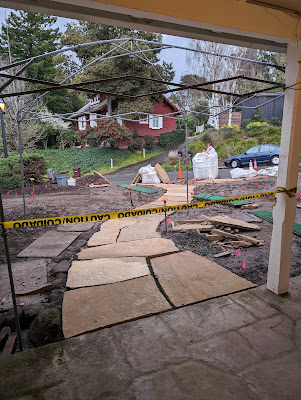This year I'm continuing my series on plant hunters, especially those who collected in the Americas at different times of history. It's fascinating to read the accounts from the plant collectors themselves and to learn about their challenges and discoveries. Of course the plants were already known by the indigenous peoples, but the discoveries by other explorers helped broaden the perspective from local environments to the world as a whole. This time we are learning about Alexander von Humboldt (1769-1859), whose greater contribution was to ecology, climate, and earth systems. He also collected botanical specimens from South and Central America and the Caribbean, and placed them in the context of his other interests.
Humboldt was born in Berlin, Prussia (now Germany) to wealthy parents and enjoyed exploring nature as a child. He started his career in mining and made contributions to the field. He inherited a great fortune from his parents, and used it to fund a five-year scientific expedition to the Americas. He sailed with friend and French botanist, Aimé Bonpland and together they explored, took temperature and barometric readings, and collected plants. Humboldt was intrigued about the relationship between geographical regions and the flora and fauna they supported.
To learn more about the botanical aspects of his scientific pursuits, I read Alexander von Humboldt and the Botanical Exploration of the Americas, by H. Walter Lack and translated from the German by Stephen Telfer (Prestel Publishing, Munich, 2018). The book provides an introduction to Humboldt and chapters describing publications of their scientific results, as well as a large botanical art section. The illustrations portray and describe the many plants collected in the Americas, presented in the chronological order of their publication. The backmatter provides a bibliography, an index of place and proper names, and photo credits. The focus on the publication of scientific information is interesting, but makes sense considering Humboldt's many interests, and the breadth of his scientific endeavors.
I was interested to learn that some of the scientific theories that Humboldt championed include continental drift, the Earth's geo-magnetic field, climate zones at different altitudes, and a general understanding of Earth as a whole system. While researching other sources, I learned that Humboldt is not widely known, even though his research, theories, and findings are important for our current understanding of climate and ecology. Looking back over my own schooling, I don't think I was ever introduced to Humboldt, unless it was a small paragraph in a larger chapter (granted, it was many decades ago). I recommend this book to learn more about Alexander von Humboldt, his scientific publications, and to enjoy beautiful botanical art of new world plants. I also recommending mining some of the YouTube videos, books and movies to learn more about this fascinating person from history.
Learn More
- Who is Alexander von Humboldt? - this Ted-Ed animation describes Humboldt's major accomplishments, and why they are so important. Presented by George Mehler and animated by Flaming Medusa Studios.
- Introducing Alexander von Humboldt - a short animation about Humboldt, his visit to the United States, and his influence on the scientists, politicians, and artists of America. The film was created in conjunction with the Smithsonian Art Museum.
- Wilderness Men - documentary film about Alexander von Humboldt, with narration by Sir David Attenborough (naturalist) and Redmond O'Hanlon (explorer).
- Alexander von Humboldt in the Americas - a seven-part documentary that retraces the route of his five year expedition and explores his scientific discoveries.
- Part 1: Introduction
- Part 2: Volcanic Visions in Ecuador
- Part 3: In Humboldt's Footsteps
- Part 4: The Humboldt Current
- Part 5: Humboldt Discovers Biodiversity in the Orinoco Basin
- Part 6: Tracing Humboldt's Tracks
- Part 7: Everything is Interaction
- Cosmos: A Sketch of the Physical Description of the Universe, Vol. 1, by Humboldt. Read Humboldt's work online (translated into English), or download it for free. Go right to the source.
- Humboldt and the Cosmos - a biography by Douglas Botting. Provides an account of Humboldt's journey through South America
- The Humboldt Current: Nineteenth-Century Exploration and the Roots of American Environmentalism - a biography by Aaron Sachs. Describes the influence that Humboldt had on American history, science, and thought.
- Measuring the World - a novel by Daniel Kehlmann that imagines two young Germans setting out to measure the world. One is explorer and naturalist, Alexander von Humboldt, and the other is the reclusive mathematician, Carl Friedrich Gauss. A movie by the same name is based on the book.













